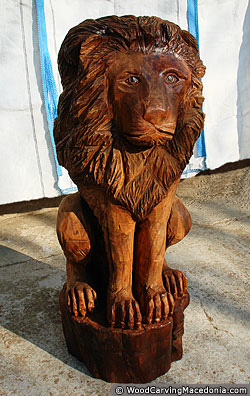There are various traditional motives of Java carvings. Stone has been used for carving since historical instances for a lot of reasons. At its worst, this process leads to a carved copy of a design that was conceived by way of clay modeling. But while many northern artists subsumed their conventional passion for life like detail inside extra classical and balanced types, there was still great variety in carving kinds.
And since stone is dear to transport and finest carved when freshly quarried, he might resolve to do all of his work on the quarry. The tendency to duplicate historic Greek and Roman sculptures relegated wood to ornament and design, with Grinling Gibbons’ college of woodcarving in England being among the most well-known. Of their makes an attempt to imagine gods and mythical beings, sculptors have invented incredible pictures based mostly on the combination and metamorphosis of animal and human kinds.
Dating from around 1,500BC the grave also held a intricately carved gem, or sealstone, which was lined in limestone. Among the most impressive woodcarvings which might be preserved from this period is Gregor Erhart’s Saint Mary Magdalene from 1500, saved in Louvre. It is nearly exclusively an historical Egyptian art type, however some lovely small-scale Indian examples in ivory have been found at Bagrām in Afghanistan In a sunken reduction, the define of the design is first incised all around.
The sculpture, carved from a single tree trunk, measures 12.286 meters lengthy, three.075 meters excessive and a pair of.401 meters broad (40.308 x 10.088 x 7.877 ft). But for most of human history, sculptors used hammer and chisel as the fundamental tools for carving stone. Small-scale carvings in ivory and wooden had been among the rare objects collected by princes and rich citizens of the Low Countries and Central Europe through the sixteenth and seventeenth centuries.
Stone carvings are smoothed by rubbing down with a graded collection of coarse and positive abrasives, equivalent to carborundum, sandstone, emery, pumice, and whiting, all used whereas the stone is moist. Wood was carved for mantelpieces, door panels and doorways, and 18th century was also marked by elevated production of wood cherubs heads. The extraordinary revival of ivory carving between 1600 and the mid-eighteenth century stemmed from the renewed circulate of the valuable materials into the fingers of European sculptors, following the opening of new maritime routes along the east and west coasts of Africa.
